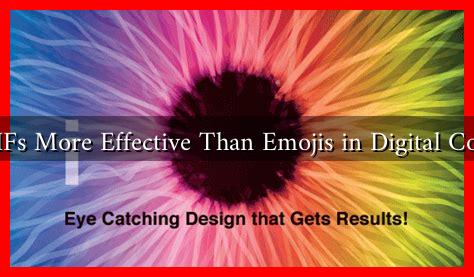-
Table of Contents
Are GIFs More Effective Than Emojis in Digital Content?
In the ever-evolving landscape of digital communication, GIFs and emojis have emerged as two of the most popular forms of expression. Both serve to enhance the emotional tone of messages, but they do so in different ways. This article explores the effectiveness of GIFs compared to emojis in digital content, examining their impact on engagement, communication clarity, and audience perception.
The Rise of GIFs and Emojis
GIFs (Graphics Interchange Format) and emojis have become integral to online communication. According to a report by Statista, over 90% of internet users utilize emojis in their digital conversations. Meanwhile, GIFs have gained traction, with platforms like Giphy reporting billions of GIFs shared daily. This popularity raises the question: which is more effective in conveying messages?
Understanding the Differences
Before diving into effectiveness, it’s essential to understand the fundamental differences between GIFs and emojis:
- Format: GIFs are animated images that can convey complex emotions or actions, while emojis are static symbols representing emotions, objects, or concepts.
- Length: GIFs can last several seconds, allowing for a more nuanced expression, whereas emojis are limited to single characters.
- Context: GIFs often require context to be understood fully, while emojis can be universally recognized.
Engagement and Interaction
One of the primary metrics for measuring the effectiveness of digital content is engagement. Studies have shown that GIFs can significantly increase user interaction compared to emojis. For instance, a study by HubSpot found that emails containing GIFs had a 26% higher click-through rate than those with static images or emojis.
Moreover, GIFs can evoke stronger emotional responses. A survey conducted by Giphy revealed that 72% of respondents felt that GIFs helped them express their feelings better than text or emojis. This emotional resonance can lead to increased sharing and virality, making GIFs a powerful tool for marketers and content creators.
Clarity of Communication
While both GIFs and emojis enhance communication, their effectiveness can vary based on context:
- GIFs: Ideal for conveying complex emotions or actions, such as excitement, humor, or sarcasm. For example, a GIF of a character celebrating can effectively communicate joy in a way that a simple smiley emoji cannot.
- Emojis: Best for quick, straightforward expressions. A thumbs-up emoji can quickly convey approval without the need for additional context.
However, the potential for misinterpretation is higher with GIFs, as their meaning can be subjective and context-dependent. In contrast, emojis tend to have more universally accepted meanings, making them less prone to misunderstanding.
Audience Perception and Brand Image
The choice between GIFs and emojis can also influence audience perception and brand image. Brands that use GIFs effectively can appear more relatable and modern. For instance, brands like BuzzFeed and Wendy’s have successfully integrated GIFs into their social media strategies, enhancing their engagement and relatability.
Conversely, excessive use of emojis can sometimes be perceived as unprofessional, particularly in formal communications. Therefore, understanding the target audience is crucial when deciding which medium to use.
Conclusion
In conclusion, both GIFs and emojis have their unique strengths and weaknesses in digital content. GIFs tend to be more effective in engaging audiences and conveying complex emotions, while emojis excel in clarity and quick communication. The choice between the two ultimately depends on the context, audience, and desired impact. As digital communication continues to evolve, understanding these nuances will be essential for marketers and content creators aiming to connect with their audiences effectively.
In the end, whether you choose GIFs or emojis, the key is to use them thoughtfully to enhance your message and foster genuine connections in the digital space.

